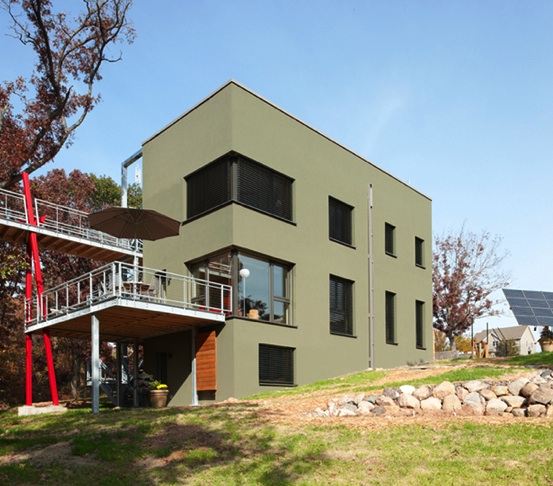
Image Credit: Chad Holder Photography
Gary Konkol built a state-of-the-art home in 2009, spending more than $1 million on what came to be called “The Passive House in the Woods” in Hudson Township, Wisconsin. It was not cheap, to be sure, but a look at five years worth of utility bills shows it doesn’t cost much to live there.
An article in the Pioneer Press adds up the power bills in Konkol’s Passivhaus-certified home: From December 2010, when Konkol moved in, to August 2015, actual electricity use averaged $6.70 per month.
Total utility charges were $2,056, but the lion’s share of that, $1,674, went to fixed meter fees from St. Croix Electric. The balance, $382, was for the electricity the house actually consumed.
The house, described in several articles at GBA by Richard Defendorf as well as in a blog by architect Tim Eian, was at the forefront of energy-efficient and sustainable design at the time it was constructed.
“We did it before it was commercially viable. … He went to where the leading edge clearly became the bleeding edge,” Eian told the Pioneer Press. “It is as energy-efficient, water-efficient, environmentally friendly as you could possibly make it in 2009. Inside and out.”
It was the first house in Wisconsin and one of the first few in county to win Passivhaus certification and while construction was well documented, the cost of building and operating it had not been detailed.
Why it cost so much to build
The house has a net floor area of 1,940 square feet, making its $1.1 million construction budget far above averages for the area.
But in a telephone conversation with GBA after the article was published, Eian said focusing on the relatively high cost of the house is missing the point: it was never designed as a model of economy for average buyers. And, Eian added, fixating on costs also overlooks an important reason for considering Passivhuas construction — environmental stewardship.
“There’s nothing mainstream about it,” he said. Comparing Konkol’s house with lower cost energy-efficient designs in the area, which the article set out to do, “is like comparing the first moon shot to what a Shuttle space mission would be. It’s apples to oranges.”
Among the features that added to construction costs:
- A 4.7-kilowatt photovoltaic array that includes rooftop panels and a dozen ground-mounted panels that can track the sun — a $73,000 feature, according to the newspaper.
- A solar thermal system for domestic hot water.
- Site development costs on the steep lot of $175,000.
- Interior walls coated with American Clay — an expensive and labor-intensive choice.
- A computer-managed electrical system, and a long list of change orders during construction.
- Enhanced building insulation and windows, resulting in R-70 walls, an R-60 slab, and a R-95 roof.
“There was no economy in the budget,” Eian said.
Energy performance could have been even better
The three-bedroom house has an enviable energy record, but Eian says it could easily have been even better. For example, Konkol’s big fruit and vegetable garden uses a lot of water. Roughly one-sixth of the 6,000 kWh of electricity consumed annually goes into drawing water from the well on the property and filtering it. If the house had been built in an urban area with a public water supply, energy consumption would have been that much lower.
The tracking system for the solar panels has failed more than once, lowering the amount of electricity the array was able to produce until repairs were made. Finally, the solar thermal system sprang a leak, forcing Konkol to use electrical resistance heat for domestic hot water until the system was repaired.
Even with those energy setbacks, total energy consumption adds up to a little over $1 a day. One reason, Eian said, is the site had only so much solar potential to offer, and the house was designed around it. In other words, a house and its mechanical systems built around the expected output of its renewable energy systems. Another key is the owner’s living habits and interest in energy frugality — and there’s no question that Konkol watches what he uses very carefully.
“Even though many people view my house as being extreme in its performance and design, I believe that there will be a day that my design and energy efficiency will be commonplace,” Konkol told the Pioneer Press. “When it’s got merit, it finds a way of becoming mainstream over time.”
Weekly Newsletter
Get building science and energy efficiency advice, plus special offers, in your inbox.





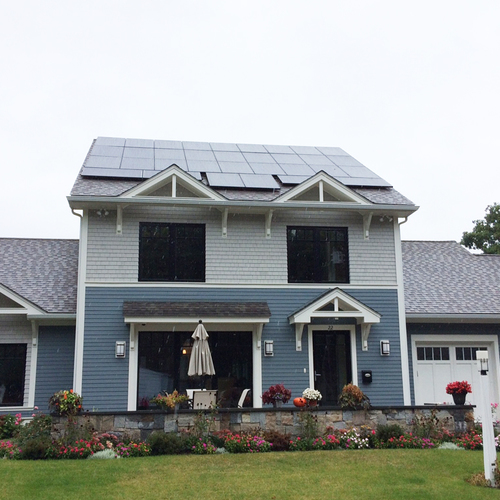
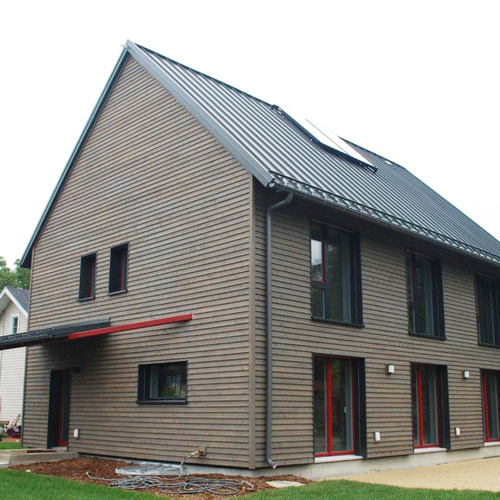
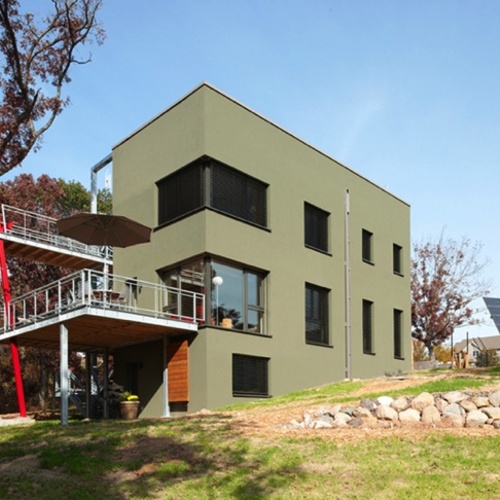
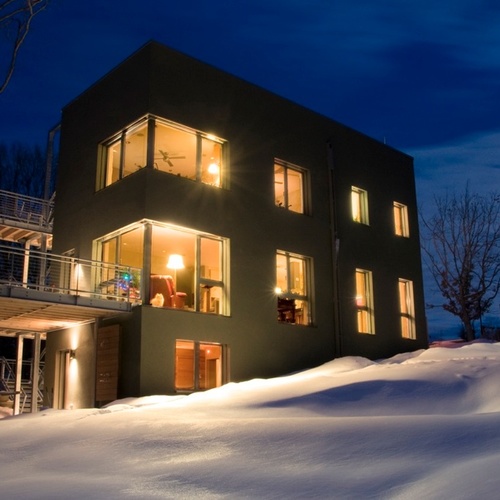






10 Comments
another example
In case anyone is interested, a couple of months ago I posted on my blog similar information about a years worth of energy consumption for my own passivhaus completed in 2013. Granted it's located in a much more moderate climate, but for comparison our 1965sf (gross area) house cost about $375k to build including permitting, sitework, some landscaping, and a small PV array.
http://www.insituarchitecture.net/blog/2015/08/08/is-it-working
Low-energy homes
It's worth pointing out that a house doesn't have to be a Passivhaus to have low energy bills. Here's a link to an article about a PV-equipped house built in 2007: Living Without Electricity Bills.
The homeowner, Johanna White, paid $10.50 for one year's worth of electricity. That includes the meter charges, so her electricity costs were significantly lower than Gary Konkol's.
Johanna White's house is not a Passivhaus -- just a well-built house equipped with PV.
Plus ça change...
Hi Scott,
Great article. It's noteworthy that the primary challenges this homeowner had with his building was with the active systems on the project: the PV tracker and the solar hot water. This mirrors what Harold Orr told the audience about his Saskatchewan Conservation House in his Pioneer Award acceptance speech at the International Passive House Conference in 2013. He told us how the solar PV and hot water systems both failed and were removed. The insulation and air-sealing kept on working for over 40 years and were the best investments made on that project.
Funny how not much changes, even with cheaper and better technology: Passive systems remain, while active one's... well, not so much.
Response to Bronwyn Barry
Bronwyn,
I'm quite familiar with the history of the solar thermal system on the Saskatchewan Conservation house, which was built in 1977. You are quite right that it had technical problems and was eventually disabled and removed.
But a PV system in 1977? I'm fairly sure that no such system was installed on the Saskatchewan Conservation house.
Expensive PV, even for then! Things DO change! (especially PV!)
The reported $73,000 for 4.7kw of PV is $15.50/watt.
The going rate in my neighborhood for similar sized fixed orientation systems at that time was about half that, and is is currently about $3.50/watt. Granted part of the array is capable of tracking (when not broken) which adds to the annual uptake but it doesn't increase the performance by 2x. (or 4.4x, the difference between fixed orientation in 2015 and the tracking array implemented in 2009.) Without mechanical tracking systems PV reliability is quite high, with a 25+ year lifecycle on the panels, 15+ years on grid-tie inverters. (And in 15 years the replacement will be cheaper, higher efficiency, and higher reliability.)
Tracking PV almost never pays off the additional cost with the increased output, and this is especially true for residential-sized arrays. Paying for higher efficiency panels usually pays though, since that reduces racking hardware and installation labor cost per watt, at a modest uptick in panel cost per watt. At the rate of improvement in raw panel efficiency and lower panel costs it may now be cheaper to stop fixing the tracking system and replacing those panels with higher efficiency panels the next time it breaks. Commercial high efficiency panels are now bumping into the ~22% efficiency range, about 1.6x the efficiency of circa 2009 commodity panels, nearly 1.3x that of higher-efficiency commercial panels of the epoch.
Anyone taking bets on typical panel efficiency circa 2022? How about 2029, when those original panels have two decades behind them? Panel costs are in the buck a watt range now, and falling, with plenty of room to fall further with just incremental manufacturing learning curves driving it. The full turn-key installed costs of arrays that size are likely to hit a buck a watt by 2029.
No mention of drainwater heat recovery heat exchangers, which are another zero-maintenance high-reliability efficiency enhancement with a 30-40 year lifecycle. Hot water is usually the biggest slice of the energy pie in a PassiveHouse or Net Zero Energy house. Drainwater heat recovery typically delivers a ~20% reduction in hot water energy use (varies with bathing preferences and total volume used for showering.)
Reply to Bronwyn Barry
Yes, it's easier to make passive systems work and to also make them work long term. But I think it's wise to not take this too far in it's conclusion. If you wanted to take this to its logical conclusion and not cherry pick those conclusions then we should never install minisplit AC units along with anything that uses mechanical valves and perhaps all electrical circuits. I think your comments, and also Martin comments from the past on active systems, are making a logical error.
What is really happening is that site built machines and constructions have many environmental variables in the home and are not the least bit standardized. It is not like a minisplit AC system where it is built as a complete unit in the factory and then tested and refined there. I think if people were earnest about building active systems that were dependable then houses would be designed from the ground up with very standardized and refined components built for a very particular environment in the home. Just like a minisplit or a computer, for that matter.
It's not the complexity that dooms active systems. Rather, it's the lack of being able to apply the same standard of dependability to a site built device as one can do to a factory built device. If you had to build each PV panel individually on the construction site then they would be no more dependable than active systems. I think it is VERY possible that active systems could become dependable it people would just keep that in mind and use the same standardization and specificity as they apply to other very complex devices that we all take for granted as being dependable.
This is probably not a very popular opinion but I think nevertheless that it's true.
Response to Eric Habegger
Eric,
I agree with you more than you think. I don't really buy the "passive is good, active is bad" dichotomy either, as you may have realized if you read my recent article on passive solar design principles.
Almost every house has active equipment, including refrigerators and furnaces and bathroom exhaust fans. We need to choose dependable equipment that is well designed, affordable, durable, and long-lasting. Some types of mechanical equipment fit the bill, and others don't.
Simple, easy-to-repair (or easy-to-service) systems are usually preferable to Rube Goldberg devices. But we aren't going to sit in a passive solar greenhouse and put on sweaters when it gets cold, so we need active systems.
Active debate
Martin - you're correct. The Saskatchewan house did not have a PV system. The Wisconsin project discussed in the above blog does, and my point is that a component of that system failed.
Eric - I had an interesting conversation with a rep for the SURE House today - the Passive House project that won this year's Solar Decathlon. If I recall correctly, he told how only one HVAC system in the entire competition remained working properly throughout the duration of the energy monitoring segment of the competition. Projects with well-designed, air-tight envelopes fared much better as a result and remained comfortable. From the score board results, it looks like the Stevens project may be one of the projects that experienced some mechanical failure, but managed to still score high in comfort: http://www.solardecathlon.gov/2015/competition-scores.html
This story mirrors some of our own experiences with monitoring projects at One Sky Homes, the company where I design and build Passive House and Plus Energy homes here in California. Even factory-built appliances sometimes fail, or don't work as well as they claim. Our monitoring efforts have enabled us to catch these fails and have them fixed. Our passive envelopes ensure that our clients don't get too sweaty (or chilly) in the interim.
I've invited the Stevens Institute Solar Decathlon rep to put together a presentation on his experience, including the tales of HVAC fails for the NAPHN conference in New York next year here. I'll see if we can make this available afterwards for GBA readers.
Dana - go PV! :) I'm also happy that it's so cheap now, but your panel efficiency won't keep you warm - or cool - if the grid goes down. (I live in earthquake country.)
In the first world countries...
... the grid mostly stays up, and even in an Net-Zero house you won't get very cold without it. (In my 1920s sub-code antique I can stay warm/cool enough without the grid, with one of those high-tech appliances, the EPA rated wood stove. :-) )
And at the manufacturing learning rate of batteries, PV + battery will be cheaper than grid power anyway. It already is in Hawaii, where just last week the regulators did away with net-metering for new projects not currently in the queue, which was SolarCity's trigger to start selling PV + solar grid-defection kits (a product recently teed up for launch into the Australian market) at $0, down, which STILL beats the utility rates:
http://www.solarcity.com/residential/backup-power-supply/off-grid-solar
PV + storage can be cost-effective even when grid-tied if the regulators set it up to allow the PV + storage owners to be paid by the utility for the ancillary frequency & voltage management services (currently supplied by fast ramping fossil fired peakers in most US markets.) By 2029 the grid is going to be a very different environment that what you think it is today (and what you think it is today may have faulty assumptions, depending on where you live.)
The amount of battery it takes to go fully off grid in cold climates isn't particularly worthwhile if you have a grid, but the amount of battery it takes to get through 1-2 days of no grid will be reasonably prices by 2030, even for places with much less expensive electricity than Hawaii or Australia.
Corrections & Additional Thoughts from the Designer
Thanks for building on the Pioneer Press article Scott. Here are just a couple of thoughts I had reading your article, and in response to the Pioneer Press original.
It is to note that the $1/day energy cost mentioned in the post includes connection fees of over $30/month. It is also noteworthy that the property operated at an energy surplus since it went online in 2010 (read beyond net zero = plus energy), and that energy costs were effectively negative. The only reason the owner is still paying a bill is the steep monthly connection fee!
All energy is accounted for—including heating in climate zone 6. The overall energy footprint of this house is less than 1/6 of the average Wisconsin home. The design heat load on the coldest day of the year is less than 3kW, or 10kBTU/h. The house is heated electrically—originally with electric resistant heating mats in the floor (read: no COP). Since 2012 it also has 2 mini split heat pumps (with COP) but the owner is also cooling a bit in the summer.
You write:"There was no economy in the budget," Eian said.
This quote was taken out of context and is extremely misleading. It needs to be read in the context of the home being built at a time when Passive House was new to this continent, the team had not done one, and the materials, systems, and design were leading edge—bordering "bleeding" edge (see cost of PV array). All of this in a climate zone, that—until the BioHaus was built in Bemidji, MN just a couple of years earlier—had not necessarily been thought of as viable for a certified Passive House. In addition, the team went for GreenStar Gold certification, which the project achieved. A testament to the many things that were incorporated in terms of green and sustainability measures. If it was available in 2009, it is in this project ;)
At the same time, I want to make clear that economy is always a consideration in our work. This project—like any project we work on—was designed and built on a budget, which presented constraints and required priorities.
The goal was a pilot project, a "light house" of sorts. Based on the project's performance, following, and most importantly the owner's satisfaction, it has achieved that and then some. The Pioneer Press article, which is quoted in this post, misses that point entirely when it pits this project's first day cost against other, much more run-of-the-mill production-built projects. This is also an extremely nicely appointed, custom home on a beautiful, yet challenging site.
Log in or create an account to post a comment.
Sign up Log in